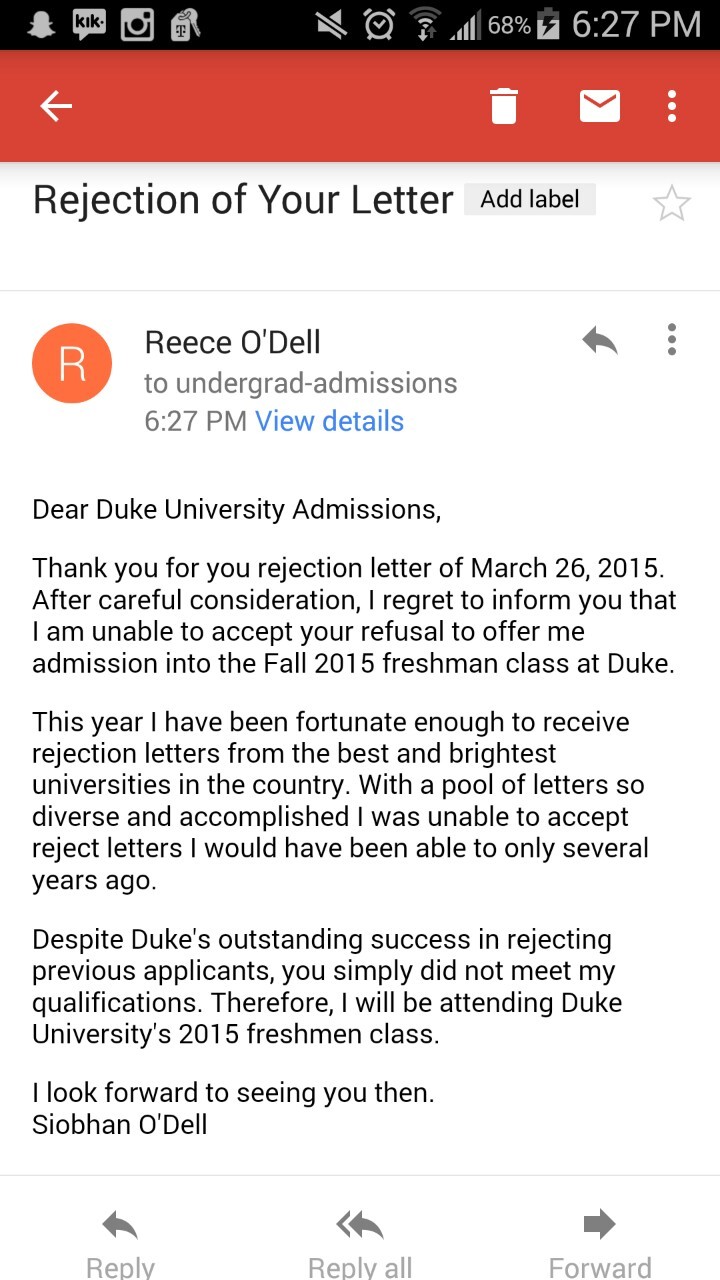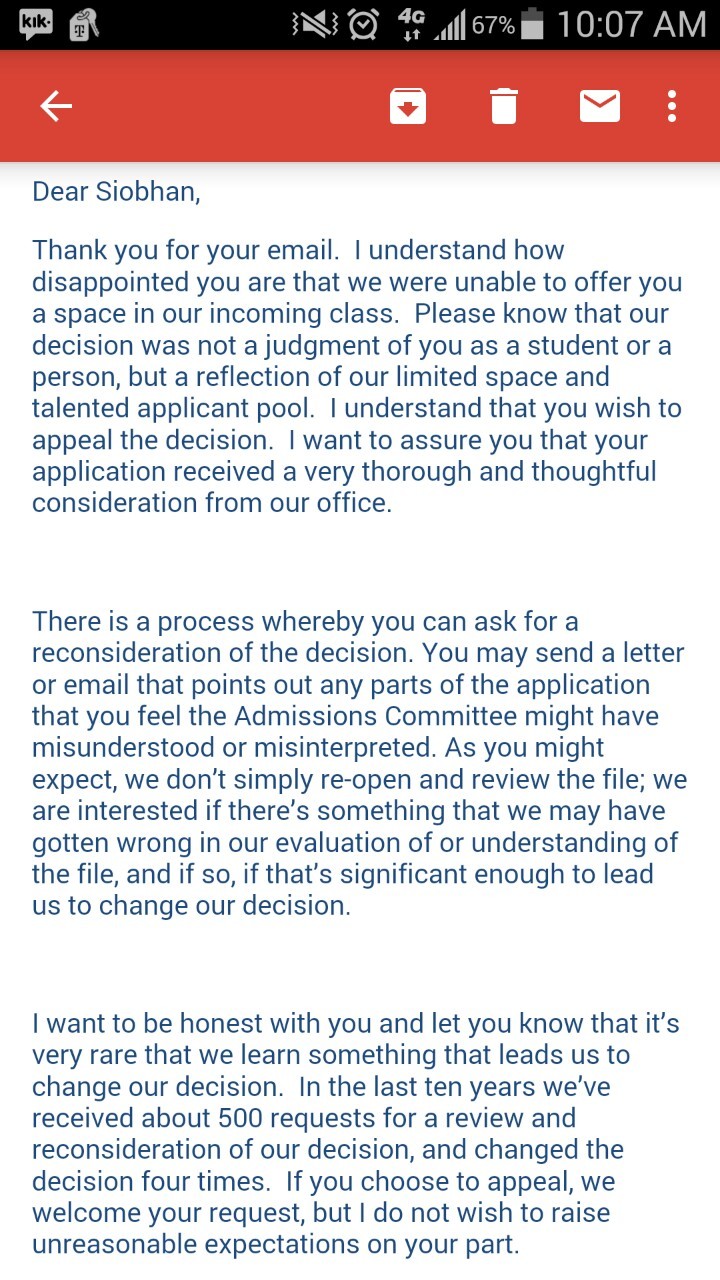
Claim: Applicant turned down for a college position sends the school a letter declining the rejection.
Example: [Devlin, 1981]
Office of Admissions
Any College
Wherever U.S.A
Dear Any College:
Having reviewed the many rejection letters I have received in the last few weeks, it is with great regret that I must inform you I am unable to accept your rejection at this time.
This year, after applying to a great many colleges and universities, I received an especially fine crop of rejection letters. Unfortunately, the number of rejections that I can accept is limited.
Each of my rejections was reviewed carefully and on an individual basis. Many factors were taken into account – the size of the institution, student-faculty ratio, location, reputation, costs and social atmosphere.
I am certain that most colleges I applied to are more than qualified to reject me. I am also sure that some mistakes were made in turning away some of these rejections. I can only hope they were few in number.
I am aware of the keen disappointment my decision may bring. Throughout my deliberations, I have kept in mind the time and effort it may have taken for you to reach your decision to reject me.
Keep in mind that at times it was necessary for me to reject even those letters of rejection that would normally have met my traditionally high standards.
I appreciate your having enough interest in me to reject my application. Let me take the opportunity to wish you well in what I am sure will be a successful academic year.
SEE YOU IN THE FALL!
Sincerely,
Paul Devlin
Applicant at Large
Origins: A pair of television commercials for Cingular's
engaging in an argument over something the child wants but the parent is declining to
The same sort of technique is employed in the example of correspondence reproduced above. Superficially, it looks like a standard rejection letter; upon closer examination, however, one discerns that it is a response from a spurned applicant who is using the same language and format as the original notice to "decline" his rejection (i.e., "I am unable to accept your rejection at this time.").
This particular form of the "anti-rejection letter" dates back at least as far as 1981, when, as
My mother, Nancy Devlin, sent a copy of this letter to the New York Times and it was published in the New Jersey section in 1981. Then in the mid-’90s or so, there was a cover story in the New York Times Magazine about the trauma students were experiencing getting rejected from colleges. As an education writer, my mom knows all too well that educational issues are cyclical. So she re-submitted the letter. This time it was published in the Op-Ed section of the Sunday New York Times, a very prestigious, high-profile space. It turns out the letter had already become popular and was reprinted in newspapers, books etc. (without my knowledge, pre-internet). The letter remains popular on the internet even today.
When I was a senior in high school, I noticed that the rejection letter I received from Harvard had a grammatical error. So, I wrote a letter back, rejecting their rejection letter. Then I sent a version to all the colleges that had rejected me.
The "anti-rejection letter" has since appeared on the Internet in many different variations using different names (for applicant and rejector) and featuring turn-downs for several different types of application (admission to university, assistant professorship position, manuscript submission, general employment), such as the following:
Dear Professor Millington, Thank you for your letter of March 16. After careful consideration, I regret to inform you that I am unable to accept your refusal to offer me an assistant professor position in your department. This year I have been particularly fortunate in receiving an unusually large number of rejection letters. With such a varied and promising field of candidates, it is impossible for me to accept all refusals. Despite Whitson's outstanding qualifications and previous experience in rejecting applicants, I find that your rejection does not meet my needs at this time. Therefore, I will assume the position of assistant professor in your department this August. I look forward to seeing you then. Best of luck in rejecting future applicants. Sincerely,
Herbert A. Millington
Chair - Search Committee
412A Clarkson Hall, Whitson University
College Hill, MA 34109
Chris L. Jensen
Has anyone ever experienced a positive outcome as a result of sending such a letter after receiving a rejection? We don't know, but perhaps someone, somewhere has scored a
In March 2015 a 17-year-old high school student named Siobhan O'Dell, who had been denied admission by Duke University, copied this format in posting a rejection letter rejecting Duke's rejection of her to Tumblr:

Duke responded to the missive, stating that it was extremely unlikely they would reverse their decision:

Sightings: This "anti-rejection letter" is mentioned in Neil Postman's essay, "Defending Against the Indefensible," which was included in his 1988 book, Conscientious Objections: Stirring Up Trouble About Language, Technology and Education.
Last updated: 5 April 2015
